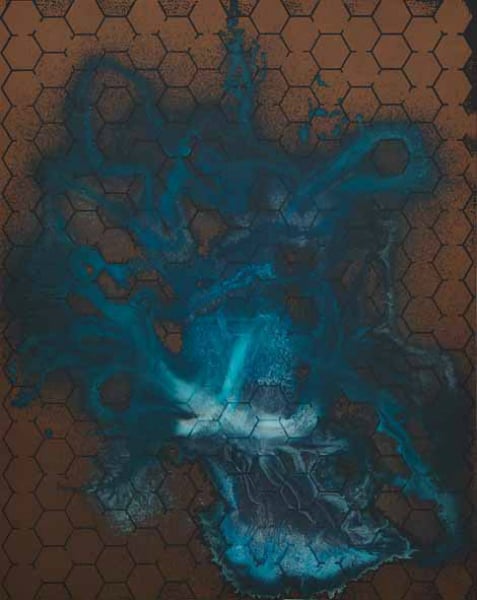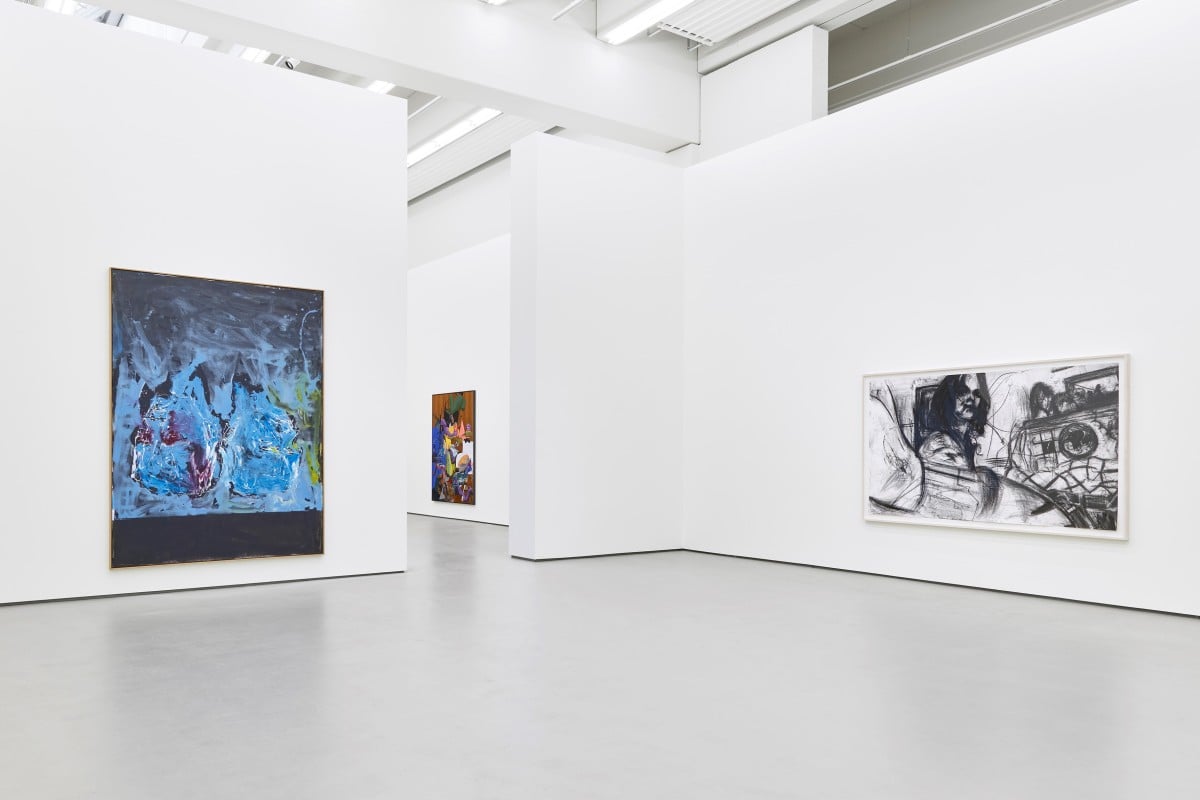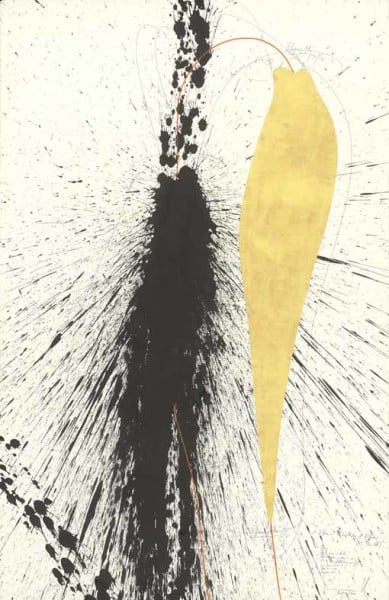People
German Collector Heiner Wemhöner on Following Instincts, Not Advisors
A catalog of the paintings in his collection has just come out.

Photo: courtesy Wemhöner collection
A catalog of the paintings in his collection has just come out.

Hili Perlson

Standing in the impressive space of Berlin’s Judin gallery, the German collector Heiner Wemhöner was pondering the etymology of the term pop-up. “I’ve never heard it before,” he told artnet News. But that didn’t stop him from adopting the format. Last week, Wemhöner celebrated the publication of a new book cataloging the paintings in his over 700-strong collection with an exhibition—installed for one night only; a pop-up show if you may—of paintings from the collection.
A slew of friends, gallerists, artists, and fellow collectors gathered for the viewing, and picked up copies of the book—the fourth one published about his collection so far, with each tome dedicated to a different medium. Wemhöner is not your usual collector; he collects across mediums and relies on no-one but himself and the works’ emotive character when adding pieces to his holdings. At the pop-up exhibition, curated by Philipp Bollmann, this approach was well demonstrated: A pair of selfish portraits (2013) by Tim Noble and Sue Webster hung next to Georg Baselitz’s Zweimalerich (2012), and Dutch Master (Menu) (2015) by Peter Stauss was positioned such that it would correspond with the Baselitz and an olive-green monochromatic canvas work by Liu Wei, titled No.21 (2013).

Michael Sailstorfer, Maze 87, (2014)
Photo: Wemhöner collection
“I’m not afraid of big names,” Wemhöner says, pointing to the Baselitz, “but I’m not hesitant about artists who are completely unknown either. I must have a certain reaction to what I buy, be it a video, photography—nearly 50 percent of my collection is photography—or installations, I’m not fixed on one thing.”
Most of the works in the show were created in the last five years. We stop in front of one of the older paintings included in the pop-up, a work from 1998 by Sandro Chia. A member of the Transavanguardia movement—which included fellow countrymen Francesco Clemente, Mimmo Paladino, Nicola De Maria, and Enzo Cucchi—Chia came to Wemhöner’s collection by way of his world-class winery. “I have quite a few works by him,” he says, “He makes wine in the Castello Romitorio wine-making estate in Montalcino, and is a very famous Brunello producer, one of the best wines in the world. I was more interested in selling the wine when I first met him, than buying his art,” he laughs.
How did you start collecting?
I never know really how to answer this question. The first piece was acquired in the late-mid-80s, a canvas by Michael Nowottny. I wouldn’t call it the start of the collection, though, I just bought something I liked. Then I began looking at contemporary paintings from Italy, by artists whose names I didn’t even know. When something I saw touched me, I’d ask for the price, and if the price was right for me, I bought it. But that wasn’t the start of the collection either. I only seriously started building up a collection in the past seven to eight years. And the bulk of the collection was acquired in the last three or four year.

Installation view at Gallery Judin
And what is the most recent work you’ve added to your collection?
I won’t buy anything I didn’t see for myself. And my other interest is to talk to the artist; I don’t buy art from dead artists, I want to know them. Most recently at Art Cologne I bought some pieces, photography by Annette Kelm, and also quite a few paintings. And just the other day I bought a photograph by a Chinese artist from another collector couple here in Berlin. They liked it but it didn’t fit into their collection, and since I collect a lot of Chinese art they invited me and I took it and now it’s mine. So you never know.
With such an unusual approach to buying, where do you usually find works, at art fairs, galleries, or directly at the artists’ studios?
Mostly by accident! I don’t follow all the art fairs and gallery openings. I, of course, go to Art Basel, Art Basel in Hong Kong, Art Cologne, and Berlin Gallery Weekend. A big part of my collection is works by Chinese artists, which not too many people know about. The art must touch me—not necessarily only positively, it can be critical and difficult, but it has to move me. Also, I can only do it alone. I only choose works by myself, I can’t have anyone talking to me or advising. It gets harder and harder because people know me by now, but I don’t like to discuss my decisions with anyone.

Jorinde Voigt, A Difference that makes a Difference (Var. VIII), (2014)
Photo: Wemhöner collection
So the collection was built up following your intuition, rather than a specific focus?
I have no follow ups, everything I do is by chance. I’m not retired, so going to see art is something I do in my free time, I’m not hopping from opening to opening. And I’ve never sold anything from my collection, why should I? Even if I see developments in an artist’s work that I agree and accept are going in a different direction, if I bought something and liked it earlier on, why should I let it go?
It’s also a collection without a permanent space. Do you live with the works?
I would like to, but I don’t have this type of space. My garden in Herford [in North Rhine-Westphalia] is full of sculptures and the company’s offices, too, all the spaces are used, but most of the works are in storage. I publish the books because I can’t see the art! It’s in storage and this allows me to revisit my collection.
I’m actually looking for a permanent location for my collection in Berlin. I actually came very close to signing a deal recently, but someone else was faster. Berlin real estate is crazy at the moment! And the great locations are few and far between, as opposed to 10 years ago, so my timing is not ideal. But maybe within two years the collection will move into a permanent Berlin location. I’d like to have something with a history, like many of the city’s industrial rooms. Just like in my collection, I like the unexpected.
So why Berlin, why not open the collection in Herford?
Art likes to be seen. We have a good museum in Herford, the Martha, but for me it makes more sense to be in Berlin where I have competition—which I like very much—and an audience from all around the world.
ABOUT PAINTING, Positions from the Wemhöner Collection is published by Kerber.